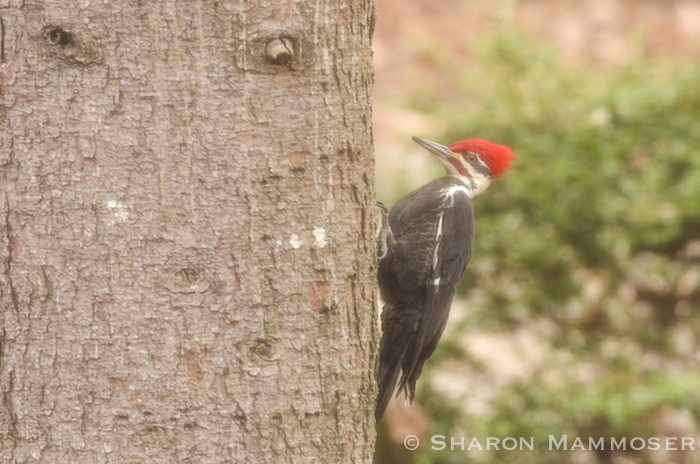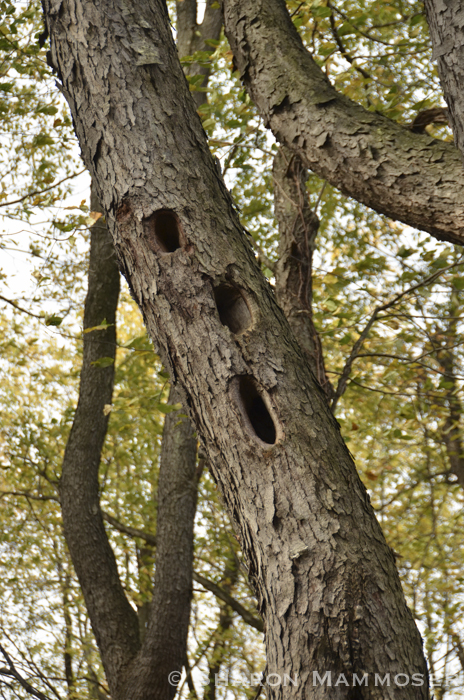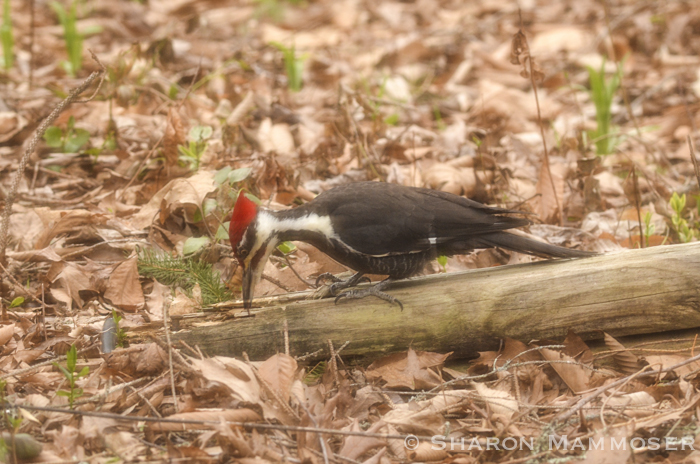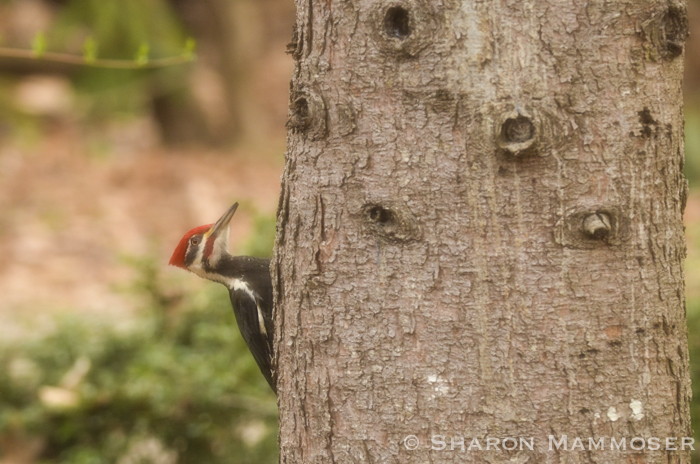 If you’ve ever seen a Pileated Woodpecker, you know they are impressive. Nearly the size of a crow at 16-19 inches long, seeing or hearing one of these handsome birds is sure to enhance any hike or outing. Do you know much about them?
If you’ve ever seen a Pileated Woodpecker, you know they are impressive. Nearly the size of a crow at 16-19 inches long, seeing or hearing one of these handsome birds is sure to enhance any hike or outing. Do you know much about them?
Here are a few interesting facts about our Pileated Woodpecker:
1. First of all, if you’re wondering how to pronounce this bird’s name, you are not alone. I was corrected years ago and have since changed to use the long i version. However, after some discussion with others and some research, it seems there are two common pronunciations– PIE-lee-ay-tid, or PILL-ee-ay-tid. It should be noted that the word Pileated comes from the biological term pileum, which means the top of the bird’s head and this is pronounced with a long i, as in pie. This is the old way of pronouncing the name but more recently it seems people have changed it to a short i. Either way, the birds don’t know the difference so choose the one you want!
2. Pileated Woodpeckers are “ecosystem engineers,” as they create cavities that other birds and mammals depend on. Many birds, such as bluebirds, require a tree cavity for their nest but don’t have the ability to build the hollow themselves, relying instead on holes already created.
3. In North America the Pileated Woodpecker used to be the 3rd largest woodpecker, falling behind the Imperial and Ivory-billed. Sadly, both of those are now considered extinct, putting the Pileated Woodpecker at the top of the list.
4. Pileated Woodpeckers mate for life and the male and the female share the responsibilities of parenting. Both work on the excavation of the nesting site, which can take up to 6 weeks to create. Both incubate the eggs and feed the babies. Pileated woodpeckers sleep or roost in holes created for this purpose.
5. Pileated Woodpeckers have only one brood per season, with an average of 4 eggs that will hatch after 18 days of incubation. They will fledge (leave the nest) in 24-30 days but will remain dependent on their parents even after that for several months.
 6. Like other woodpeckers, they have adaptations that allow them to perfectly fit their environments and do what they do. Stiff tail feathers allow them to prop themselves on trees and unlike songbirds who have three toes forward and one back, woodpeckers’ feet are in a zygodactyl arrangement– this means they have two toes facing forward and two facing backward. This helps them cling to a tree. Woodpeckers have skulls that are built to absorb shock, with bone that is thick and spongy, acting as a natural shock absorber. (Want to read more about why they don’t get brain damage from all that banging? Click here for an interesting article from Mental Floss )
6. Like other woodpeckers, they have adaptations that allow them to perfectly fit their environments and do what they do. Stiff tail feathers allow them to prop themselves on trees and unlike songbirds who have three toes forward and one back, woodpeckers’ feet are in a zygodactyl arrangement– this means they have two toes facing forward and two facing backward. This helps them cling to a tree. Woodpeckers have skulls that are built to absorb shock, with bone that is thick and spongy, acting as a natural shock absorber. (Want to read more about why they don’t get brain damage from all that banging? Click here for an interesting article from Mental Floss )
7. Pileated Woodpeckers feed on insects like carpenter ants and beetles. You can sometimes see them hopping around on a fallen tree or even the ground looking for ants. Like other woodpeckers, they have a long tongue. A Pileated tongue is 6 inches long! and has brushes at the end for grabbing ants. They also eat fruit and nuts.
8. Predators of Pileated Woodpeckers include northern goshawks, red-tailed hawks, cooper’s hawks, great horned owls, martens, gray fox, weasels, black rat snakes and squirrels.
 9. The territory of a Pileated Woodpecker is between 1000-4000 acres. They “drum” to announce their territory.
9. The territory of a Pileated Woodpecker is between 1000-4000 acres. They “drum” to announce their territory.
10. This is the woodpecker that inspired the cartoon character Woody the Woodpecker… you know that laugh? Next time you hear a Pileated Woodpecker, listen and see if you can hear the resemblance.
Audio Player
